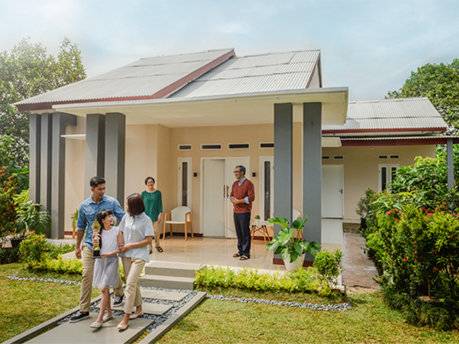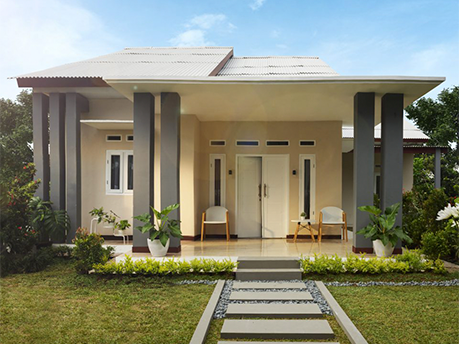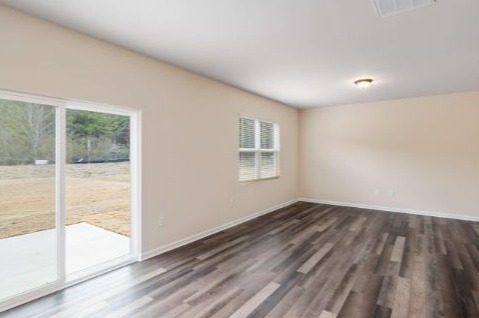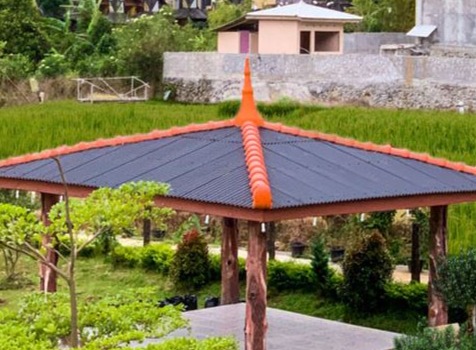Effective Solutions for Roof Condensation Issues

Roof condensation is when airborne water vapor becomes liquid upon contact with the cold roof surface. It’s a natural phenomenon that occurs when warm and humid air meets a cooler surface, like your home’s roof.
Despite its seemingly trivial nature, condensation can lead to serious issues if not properly addressed, especially in tropical climates like Indonesia.
The temperature difference between the indoor and outdoor air creates water vapor. This vapor then clings to the roof surface and transforms into water, which, if left unchecked, can damage the roof and other building structures.
3 Common Causes of Roof Condensation and Their Negative Effects
3 main factors contribute to condensation on roofs. Here are the key points, along with their explanations:
● Suboptimal Ventilation
Inadequate ventilation can trigger condensation as humid air gets trapped inside the house, creating an ideal environment for condensation.
This moist air is generated from everyday activities like cooking, bathing, and even breathing indoors.
This humid air then rises to the roof, and when it encounters the cold roof surface, it transforms into water, causing condensation.
The consequences of condensation can harm your roof’s structure, shorten its lifespan, and even foster the growth of mold and moss, which can potentially affect health.
● Insufficient Insulation
Poor or absent insulation can exacerbate condensation issues. Good insulation helps maintain indoor temperatures and prevents drastic temperature changes that can trigger condensation.
Inadequate insulation allows warm, moist air from inside the house to reach the cold roof, creating perfect conditions for condensation.
Additionally, poor insulation can worsen condensation problems by allowing cold air from outside to enter the house. This can lower indoor temperatures and create ideal conditions for condensation.
It’s important to note that this factor can also damage the roof structure and promote mold and moss growth.
● Extreme Temperature Fluctuations
Extreme temperature changes, particularly during winter, can trigger condensation. Cold temperatures outside and warm temperatures indoors can create optimal conditions for condensation.
When indoor temperatures are significantly warmer than outdoor temperatures, humid air from inside the house can rise to the roof and transform into water upon contact with the cold roof surface.
This can lead to excessive condensation, which, if not properly addressed, can damage the roof structure and shorten its lifespan.
9 Practical Tips for Dealing with Roof Condensation Issues
There are several ways you can address condensation problems on your roof. Here are the key points and brief explanations:
● Improving Indoor Ventilation
Good ventilation is crucial to reducing condensation. You can install additional ventilation in rooms prone to condensation, such as bathrooms and kitchens.
Additionally, regularly open windows to ensure fresh air enters and humid air exits.
● Regulating Indoor Temperature
Extreme temperature fluctuations between day and night can trigger condensation. Try to maintain a stable indoor temperature by using temperature controls or thermostats.
● Installing Roof Insulation
Roof insulation can help prevent roof condensation by maintaining a stable roof temperature. Make sure to choose the right insulation material and install it correctly.
● Using a Dehumidifier
A dehumidifier can help reduce indoor humidity. This device draws moisture from the air, decreasing the amount of water vapor that can lead to condensation.
● Choosing the Right Roofing Material
Certain roofing materials are more susceptible to condensation than others. For instance, metal roofs tend to experience more condensation than asphalt roofs. Therefore, selecting the appropriate roofing material for your home is important.
● Avoiding Humidity-Increasing Activities
Certain activities like cooking and bathing can raise indoor humidity levels. Try performing these activities with windows open or using an exhaust fan.
● Installing a Vapor Barrier
A vapor barrier can prevent condensation by blocking moisture from entering the roof structure. Vapor barriers are typically made of plastic or foil and are installed beneath roof insulation.
● Using Anti-Condensation Paint
Specialized paint can help prevent condensation by creating a surface that doesn’t allow water vapor to adhere. This type of paint often contains moisture-absorbing materials, thus preventing condensation.
● Consulting with Professionals
If you’re having difficulties or unsure about how to address condensation, it’s advisable to consult with professionals. They can offer advice, assess your roof’s condition, and provide suitable solutions for your home.
6 Common Signs of Roof Condensation and Steps to Remediate
Here’s an explanation of the common signs of condensation and the steps that need to be taken to rectify it:
● Blisters on the Roof
Blisters on the roof form when water accumulates beneath the roof layers, causing the layers to bubble.
To address this issue, you must replace the affected roof section or improve your roof’s ventilation system.
● Soft Spots on the Roof
Soft spots on the roof can be an indication of condensation. These areas may feel soft or spongy to the touch and appear damp.
To fix this problem, you’ll need to replace the damaged roof section and ensure that your roof has adequate ventilation.
● Wet Stains on the Ceiling
Wet stains on the ceiling are the most obvious sign of roof condensation. These stains are typically brown or yellow and may come with water drips. If you notice these stains, promptly inspect the roof for signs of condensation.
To address it, you need to identify and fix the moisture source. The solution may involve improving roof ventilation or insulation.
● Wood Component Rot
Condensation can lead to wood components on your roof rotting. If you see signs of decay, such as discolored or musty-smelling wood, it indicates a condensation problem.
To prevent recurrence, you must replace the damaged wood components and ensure your roof has optimal ventilation.
● Growth of Mold and Moss
Condensation can create an ideal environment for mold and moss growth. So, promptly inspect your roof if you observe signs of this growth.
To handle it, you must first clean the mold and moss. Then, ensure your roof has proper ventilation and insulation.
● Electrical Issues
Condensation can also cause electrical problems, like short circuits or damage to electrical equipment in your home.
If you experience these electrical issues, don’t delay checking your roof. After fixing the condensation source, service or replace the damaged electrical equipment.
Addressing roof condensation issues is a crucial step in keeping your home safe and comfortable. So, apply the tips mentioned above to protect your home from damage due to condensation! Don’t forget to also use Djabesmen roofing!

3 Jenis Atap Rumah Terkuat yang Paling Diminati
3 Jenis Atap Rumah Terkuat yang Paling Diminati
Baca Selengkapnya arrow_right_alt

Kenali Ciri Atap Fiber Yang Kuat Untuk Rumah
Kenali Ciri Atap Fiber Yang Kuat Untuk Rumah
Baca Selengkapnya arrow_right_alt

Jenis-Jenis Plafon Rumah yang Wajib Anda Tahu!
Sebelum membeli, kenali dulu setiap jenis plafon rumah agar tidak salah pilih! Berikut penjelasan selengkapnya.
Baca Selengkapnya arrow_right_alt

Manfaat dari Plafon Rumah
Apa manfaat plafon rumah? Selain untuk estetika, plafon juga memiliki fungsi lain. Berikut fungsi plafon selengkapnya!
Baca Selengkapnya arrow_right_alt












